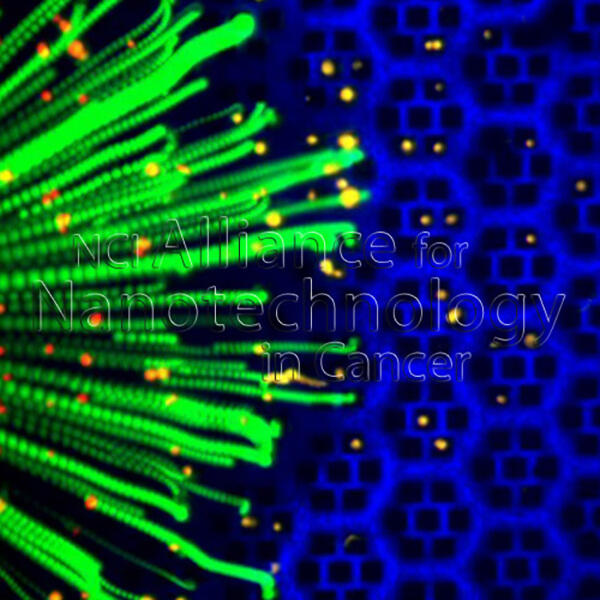Nanotechnology in Cancer Research
Nanotechnology is the application of materials, functionalized structures, devices, or systems at the atomic, molecular, or macromolecular scales. At these length scales, approximately the 1-100 nanometer range as defined by the U.S. National Nanotechnology Initiative (NNI), unique and specific physical properties of matter exist, which can be readily manipulated for a desired application or effect. Furthermore, nanoscale structures can be used as individual entities or integrated into larger material components, systems, and architectures. Nanotechnology-based structures and devices are already enabling a large number of novel applications in various fields – including medicine.
Clinical Use
The earliest nanotechnology-enabled imaging agents and cancer drugs were approved by the U.S. Food and Drug Administration (FDA) over a decade ago, and FDA approved nanomedicines include iron oxide nanoparticles for enhanced MRI imaging contrast and Abraxane®, a nanoparticle formed by binding the serum protein albumin to the chemotherapy drug paclitaxel, and Doxil®, a pegylated liposomal formulation of the chemotherapy drug docetaxel. Abraxane improves patient tolerance of the drug paclitaxel by stabilizing the drug for in vivo delivery without requiring the use of non-biocompatible chemical stabilizers. For some patients and cancers, Doxil improves the therapeutic efficacy of docetaxel and reduces cardiomyopathy, a dangerous side effect of the drug.
A number of nanomedicines and nanoparticle drugs have received Investigational New Drug (IND) approval from the FDA are currently undergoing clinical trials. Although some are intended to improve performance of existing chemotherapy drugs, as with Abraxane and Doxil, others enable use of potent compounds that are too toxic or insufficiently biocompatible for use without the pharmacokinetic advantages conferred by the nanoparticle packaging. Nanoparticles are also being investigated for delivery of nucleic acids and proteins that are unstable in blood, such as small interfering RNA (siRNA) for RNA interference (RNAi) therapy, and molecularly targeted therapies such as tyrosine kinase inhibitors.
Treatment and Therapy
Research on nanotechnology cancer therapy extends beyond drug delivery into the creation of new therapeutics available only through use of nanomaterial properties. Although small compared to cells, nanoparticles are large enough to encapsulate many small molecule compounds, which can be of multiple types. At the same time, the relatively large surface area of nanoparticle can be functionalized with ligands, including small molecules, DNA or RNA strands, peptides, aptamers or antibodies. These ligands can be used for therapeutic effect or to direct nanoparticle fate in vivo. These properties enable combination drug delivery, multi-modality treatment and combined therapeutic and diagnostic, known as “theranostic,” action. The physical properties of nanoparticles, such as energy absorption and re-radiation, can also be used to disrupt diseased tissue, as in laser ablation and hyperthermia applications.
Integrated development of innovative nanoparticle packages and active pharmaceutical ingredients will also enable exploration of a wider repertoire of active ingredients, no longer confined to those with acceptable pharmokinetic or biocompatibility behavior. In addition, immunogenic cargo and surface coatings are being investigated as both adjuvants to nanoparticle-mediated and traditional radio- and chemotherapy and as stand-alone therapies. Innovative strategies include the design of nanoparticles as artificial antigen presenting cells and in vivo depots of immunostimulatory factors that exploit nanostructured architecture for sustained anti-tumor activity.
Early Detection and Diagnosis
Although not yet deployed clinically for cancer detection or diagnosis, nanoparticles are already on the market in numerous medical screens and tests, with the most widespread use that of gold nanoparticles in home pregnancy tests. Nanoparticles are also at the heart of the Verigene® system from Nanosphere and the T2MR system from T2 Biosystems, currently used in hospitals for a variety of indications.
For cancer, nanodevices are being investigated for the capture of blood borne biomarkers, including cancer-associated proteins circulating tumor cells, circulating tumor DNA, and tumor-shed exosomes. Nano-enabled sensors are capable of high sensitivity, specificity and multiplexed measurements. Next generation devices couple capture with genetic analysis to further elucidate a patient’s cancer and potential treatments and disease course.
Already clinically established as contrast agents for anatomical structure, nanoparticles are being developed to act as molecular imaging agents, reporting on the presence of cancer-relevant genetic mutations or the functional characteristics of tumor cells. This information can be used to choose a treatment course or alter a therapeutic plan. Bioactivatable nanoparticles that change properties in response to factors or processes within the body act as dynamic reporters of in vivo states and can provide both spatial and temporal information on disease progression and therapeutic response.
Research Tools
Nanotechnology can also be used for development of research tools to advance the study of cancer. Examples include in vitro tumor models, such as vessel perfused microfluidic chips that mimic tumor microenvironment and enable study of transport properties within tumors and devices that use nanoparticle probes to study cellular drug responses and mechanisms.
